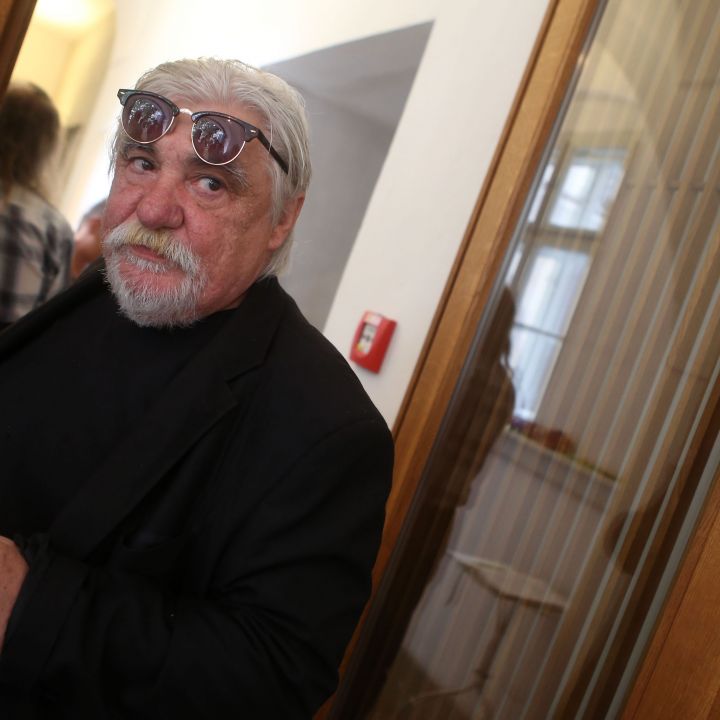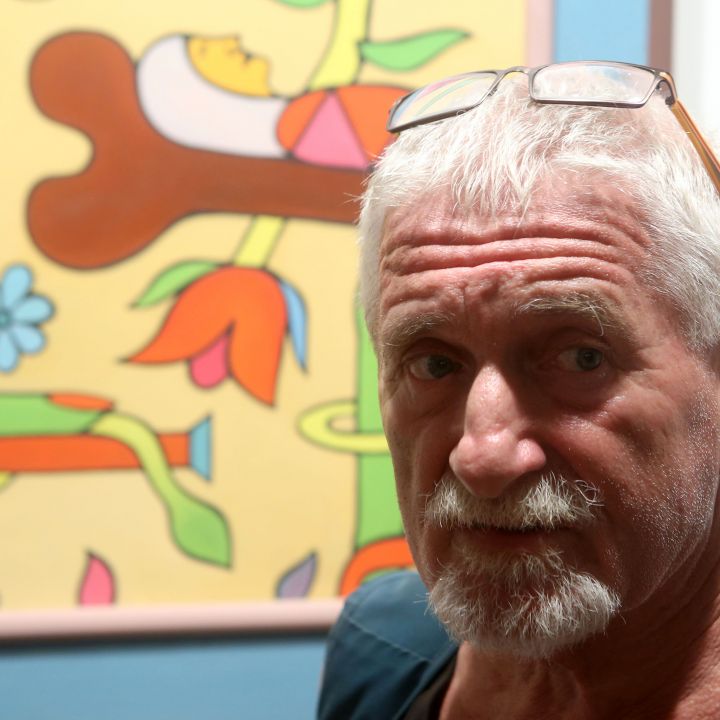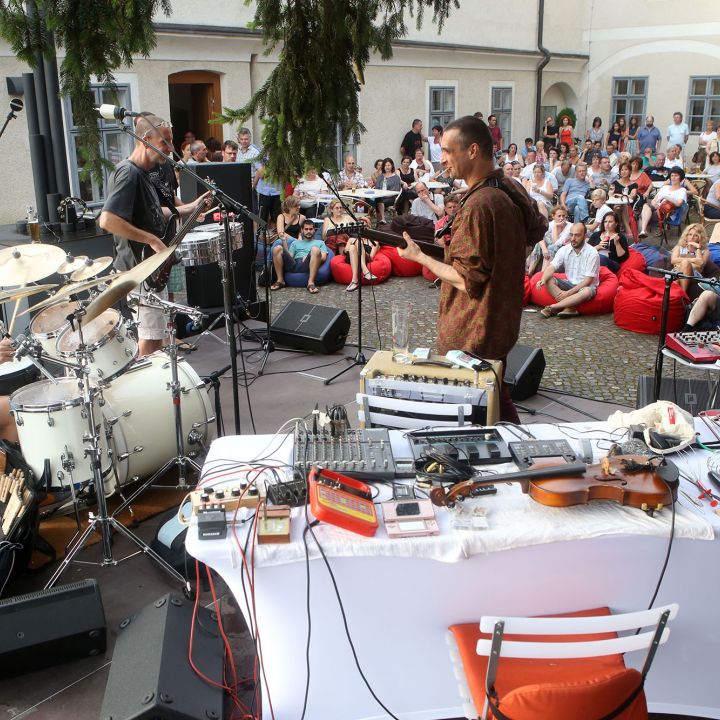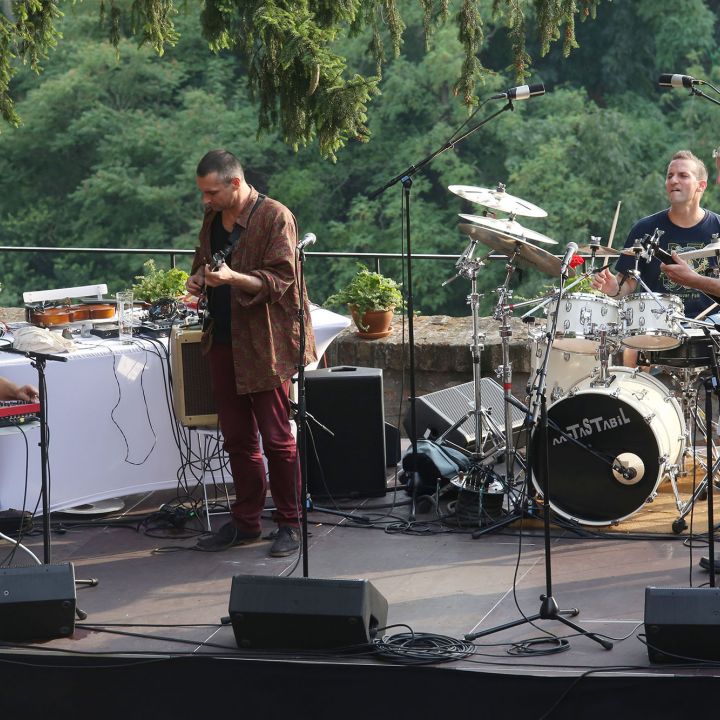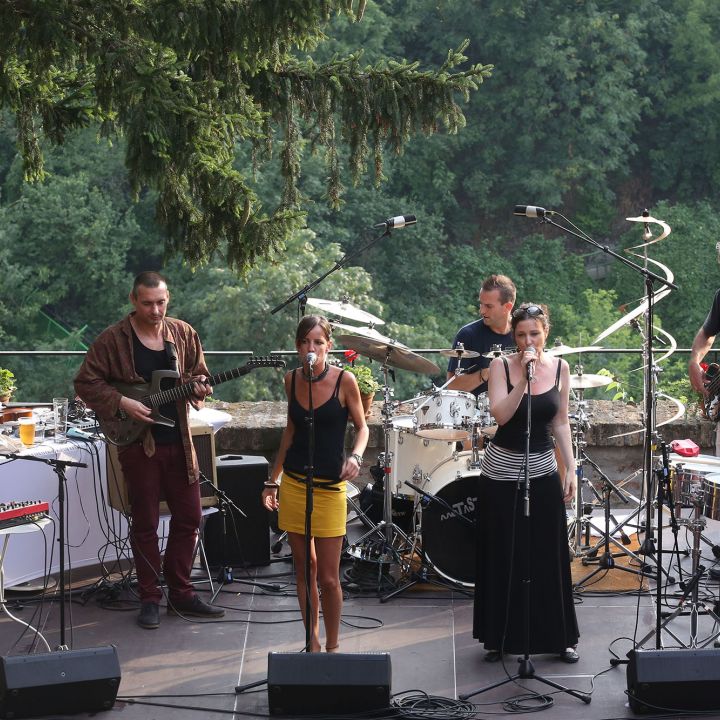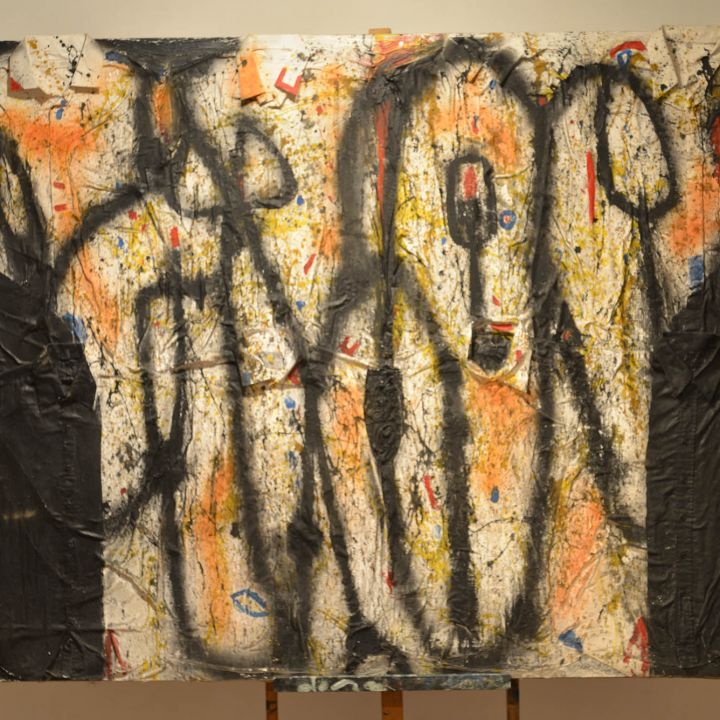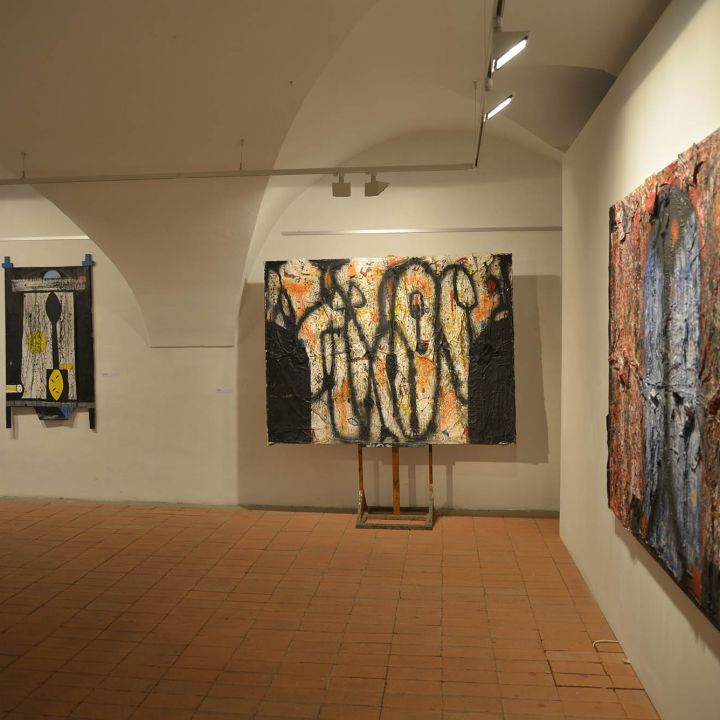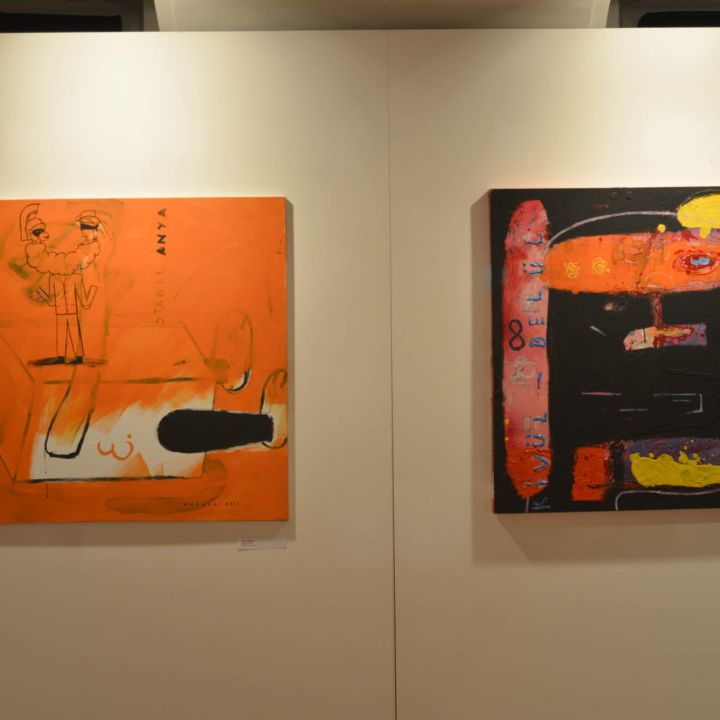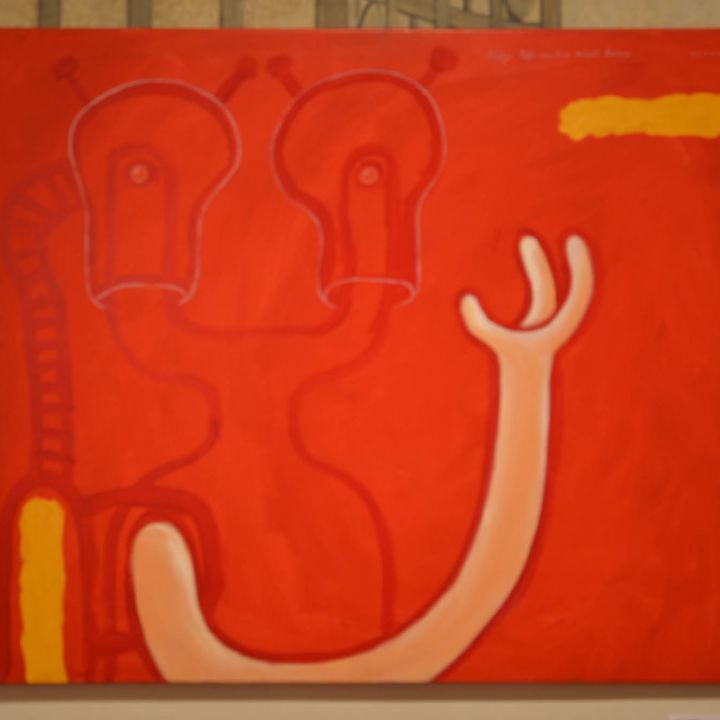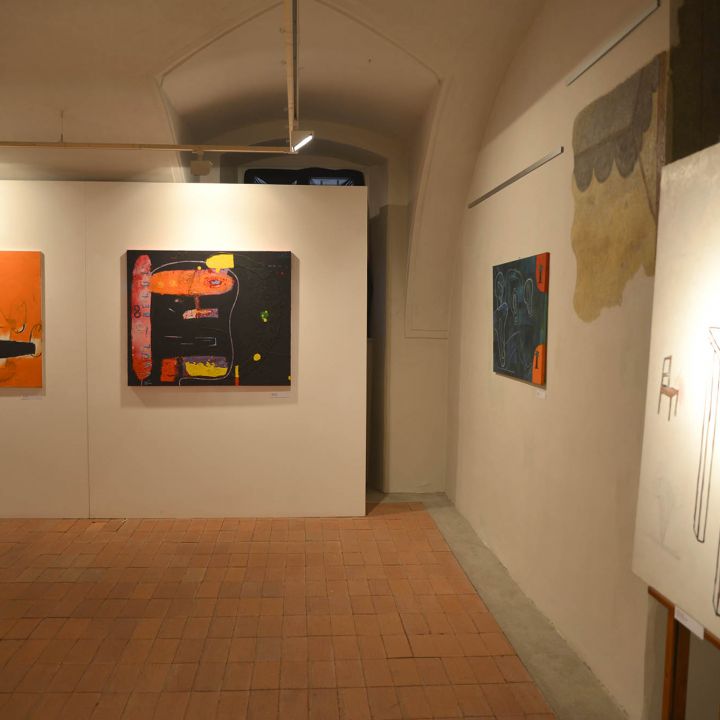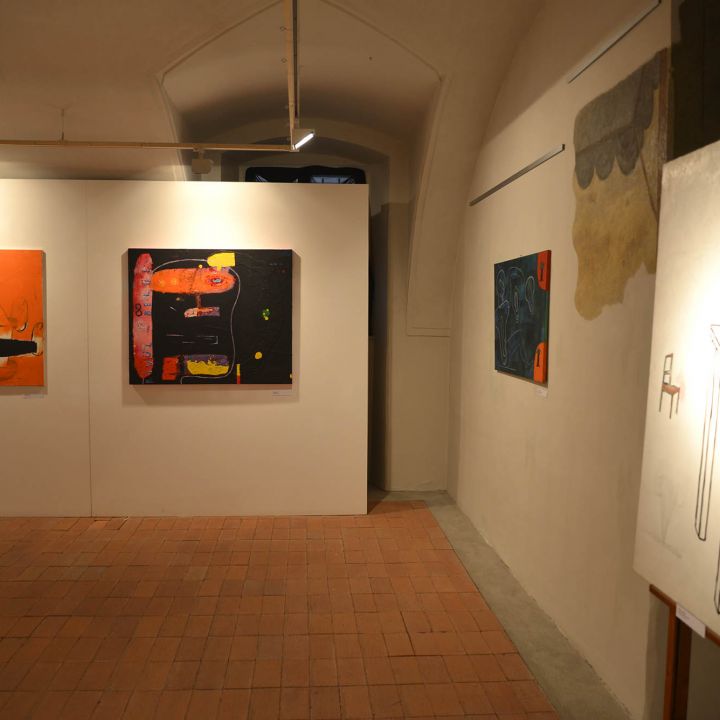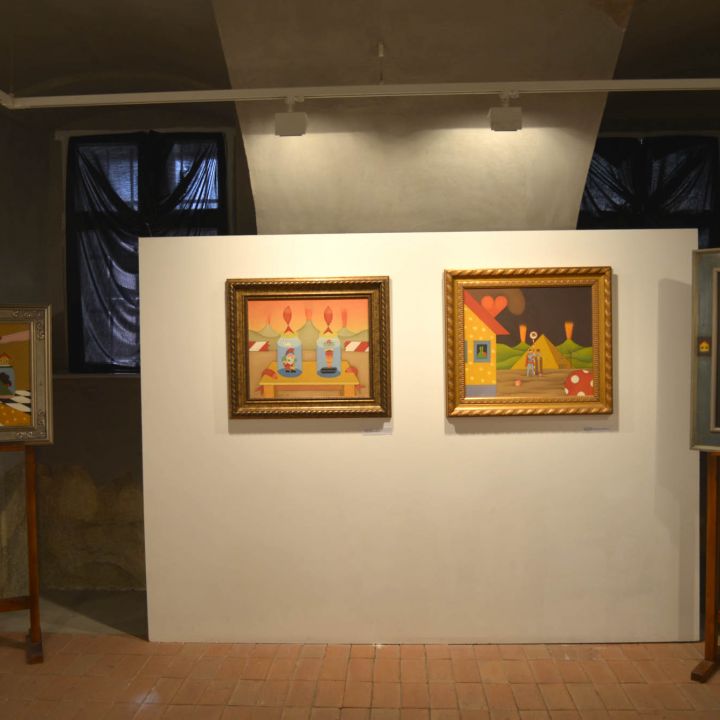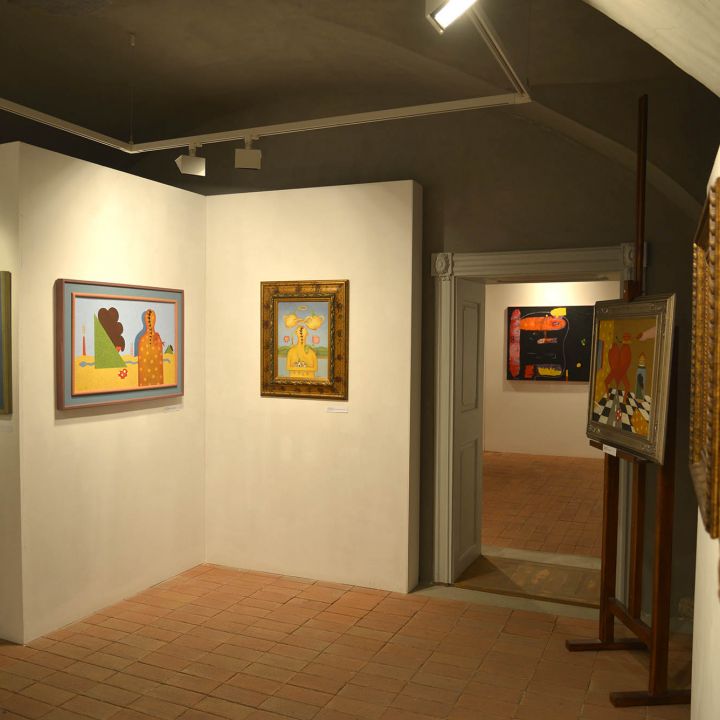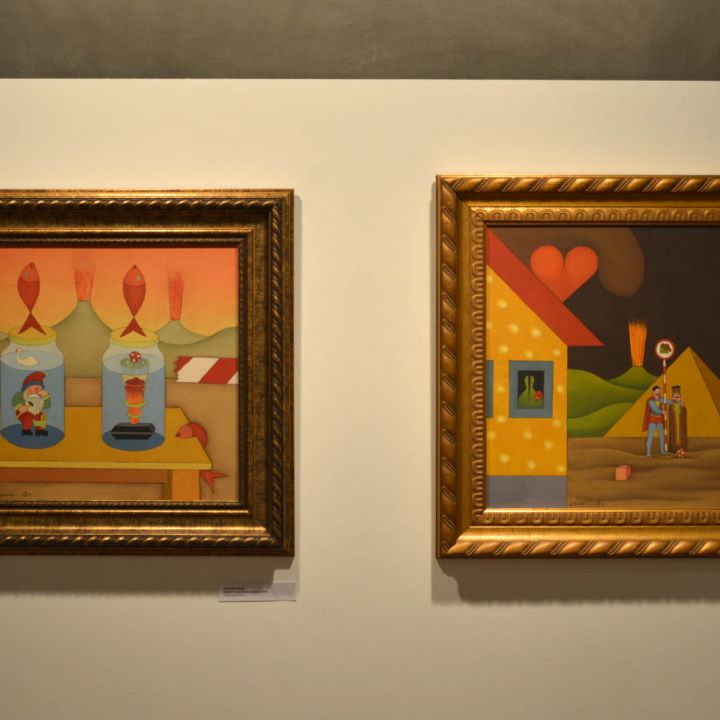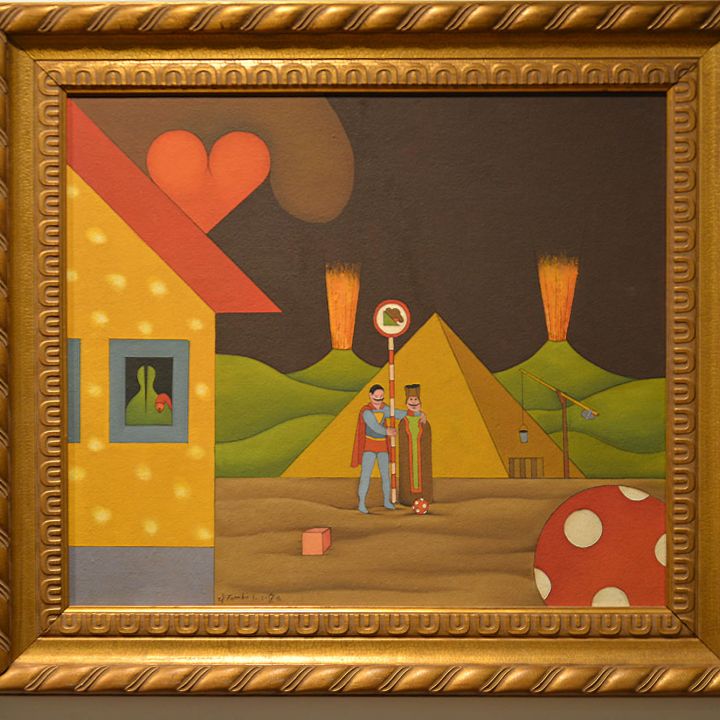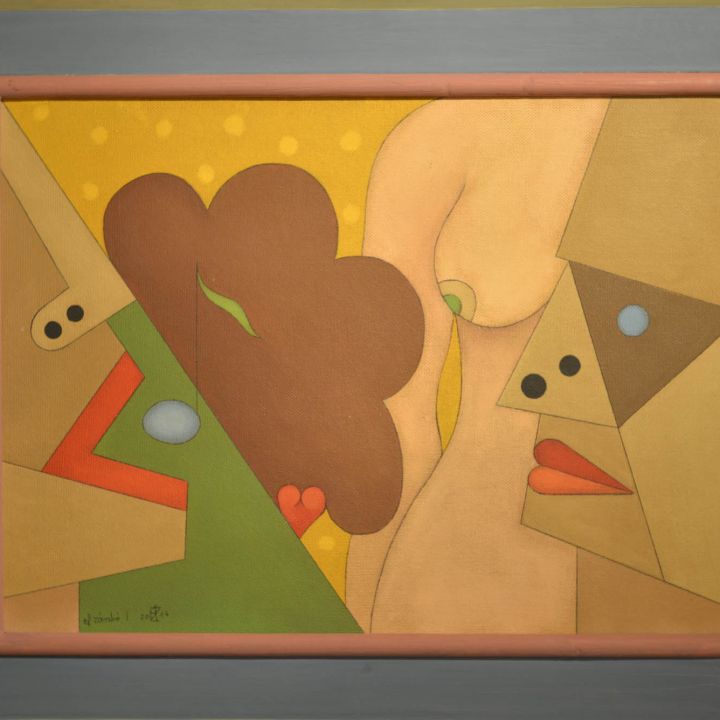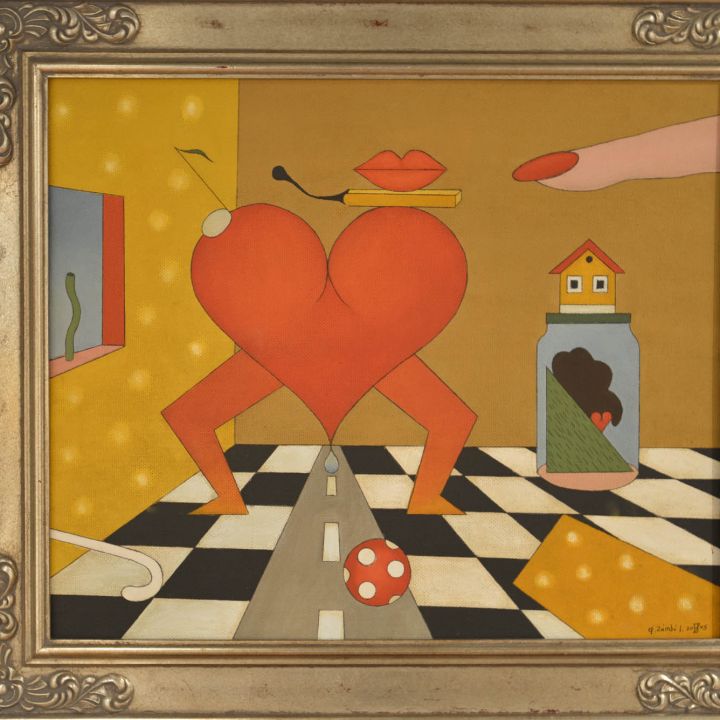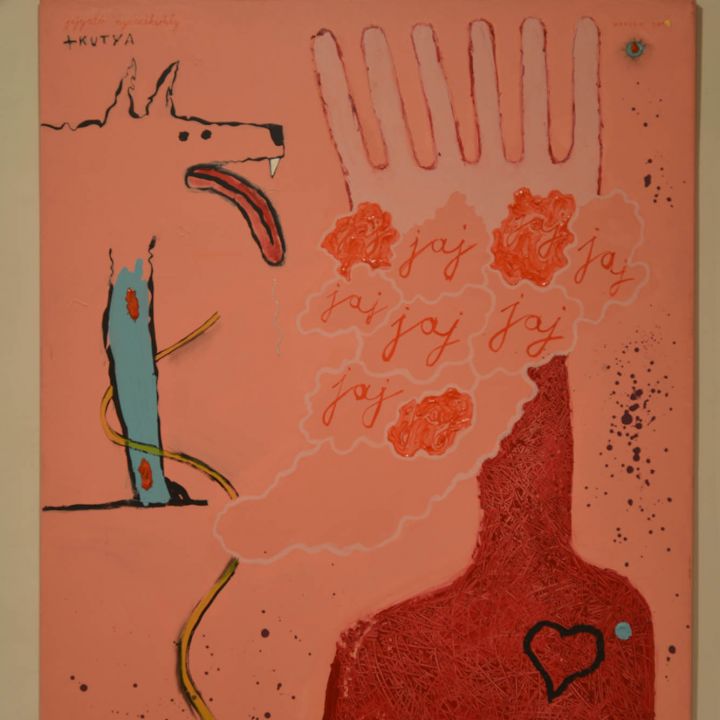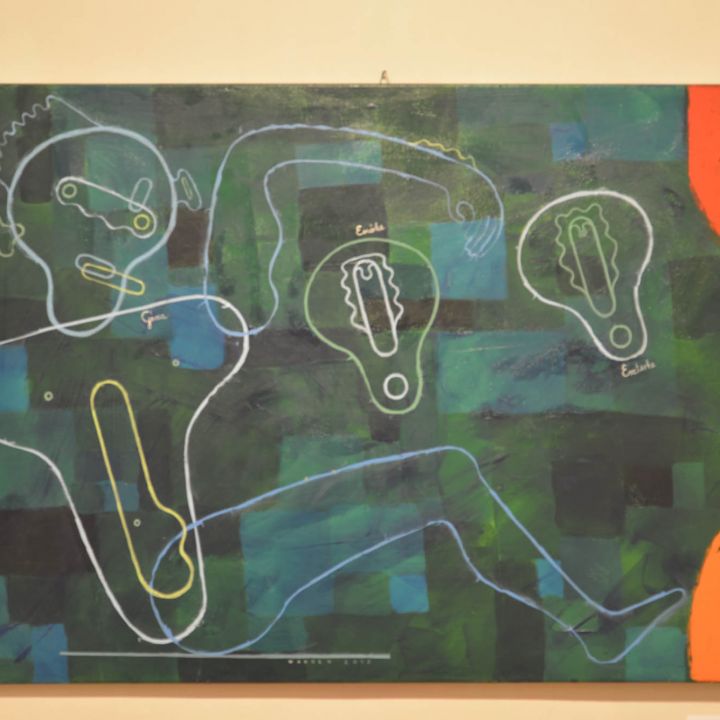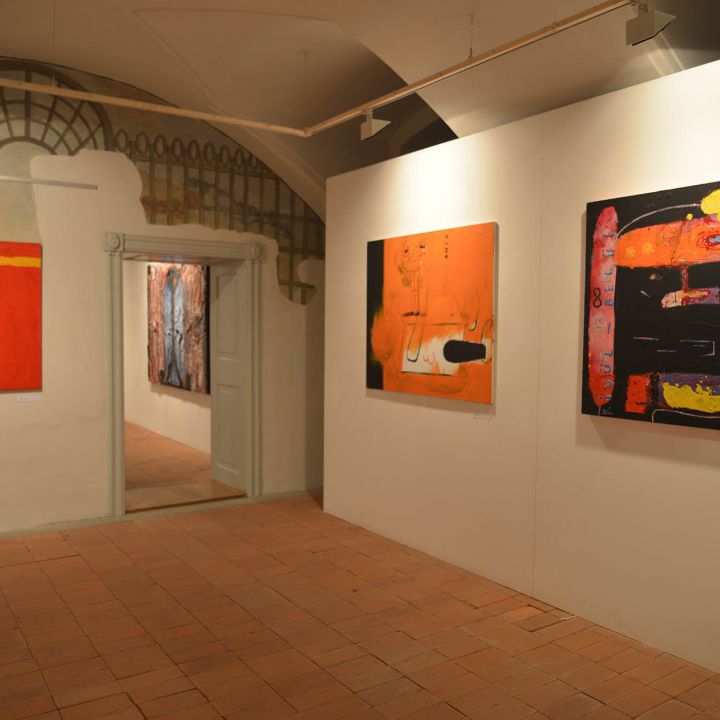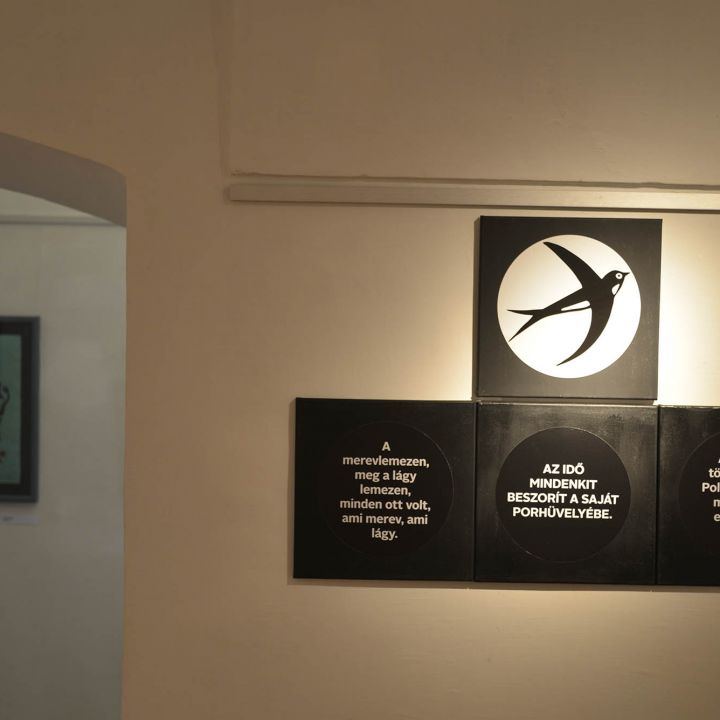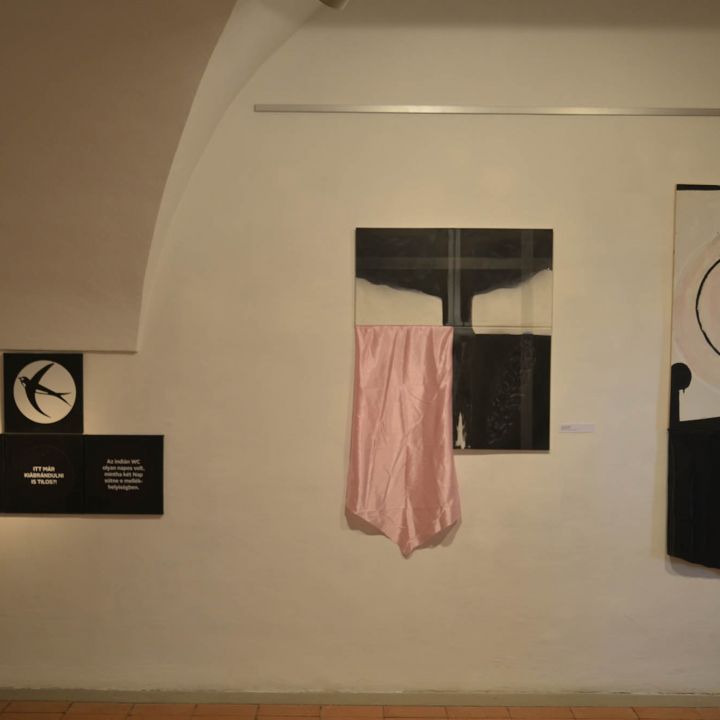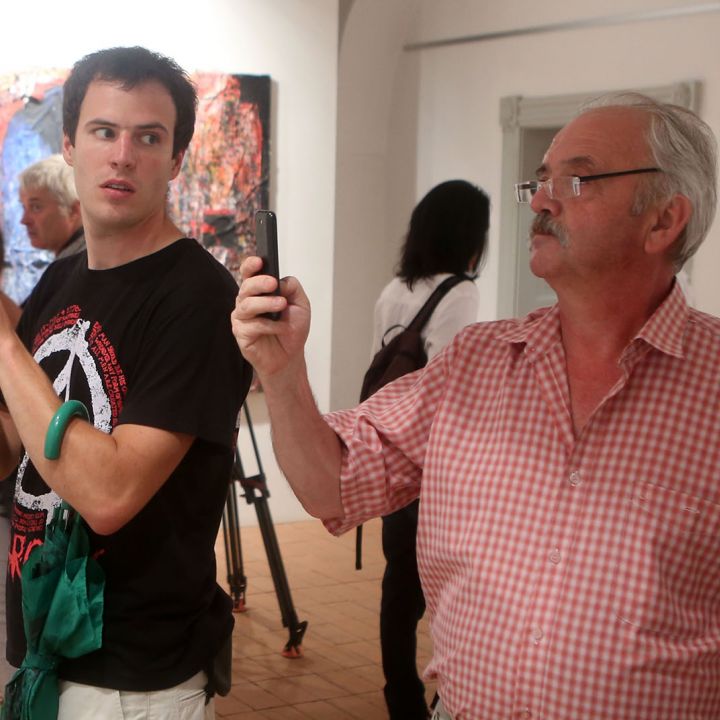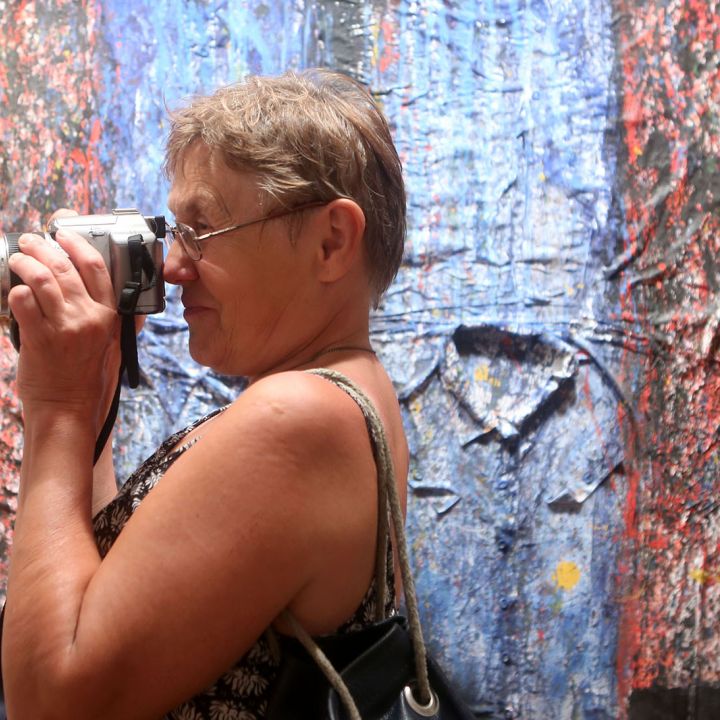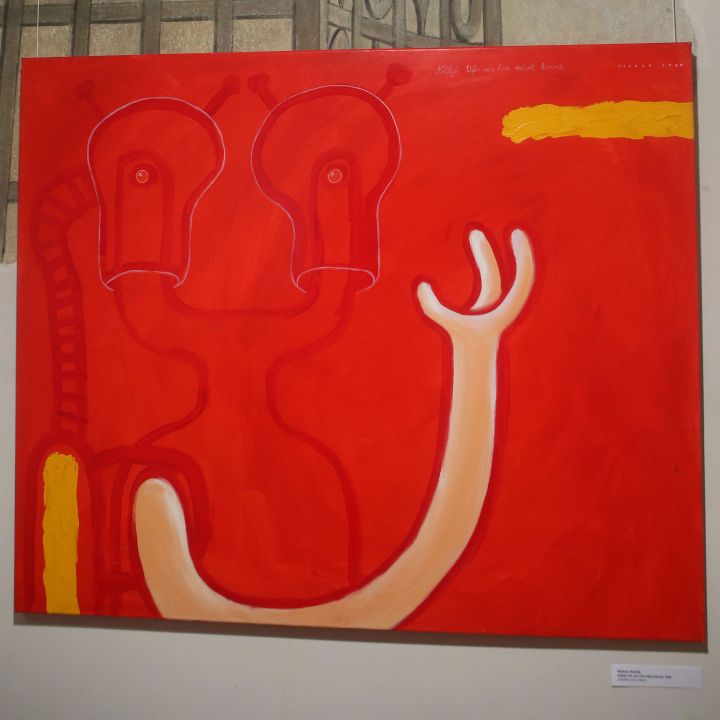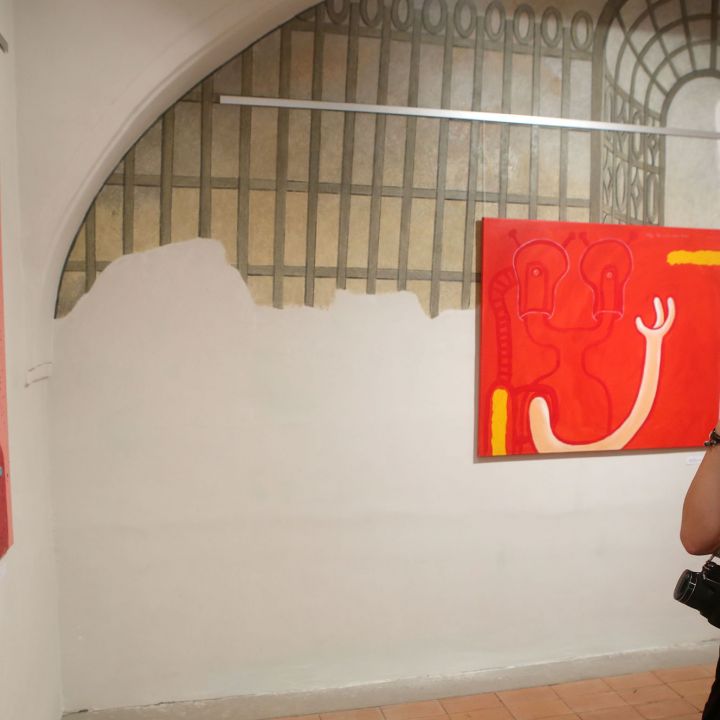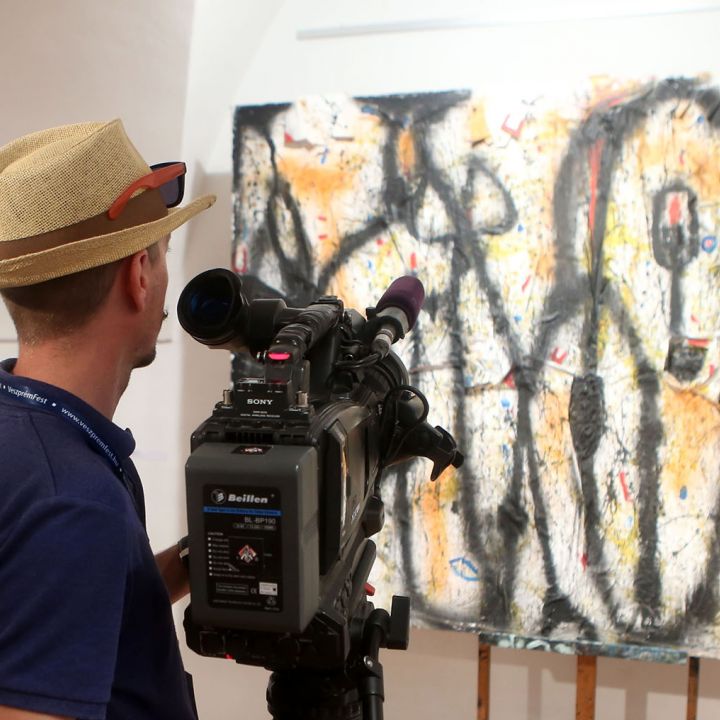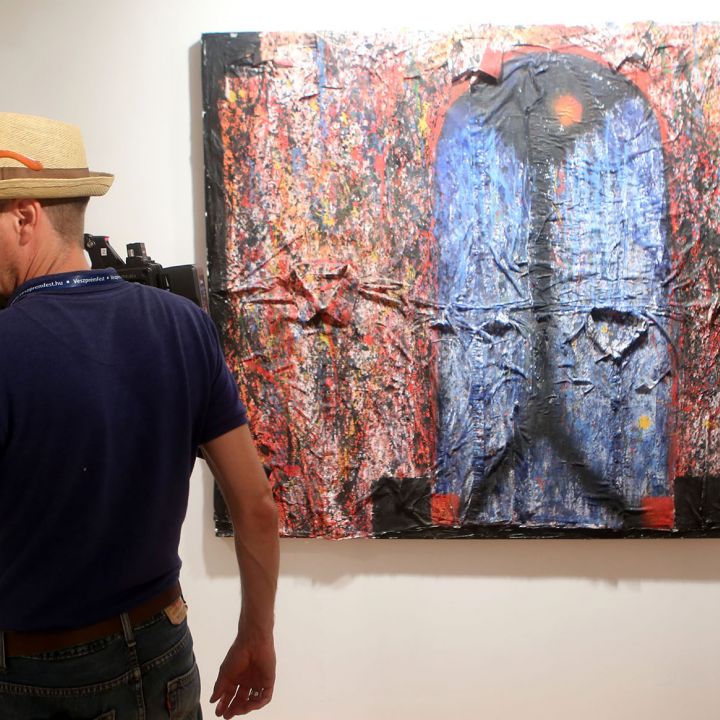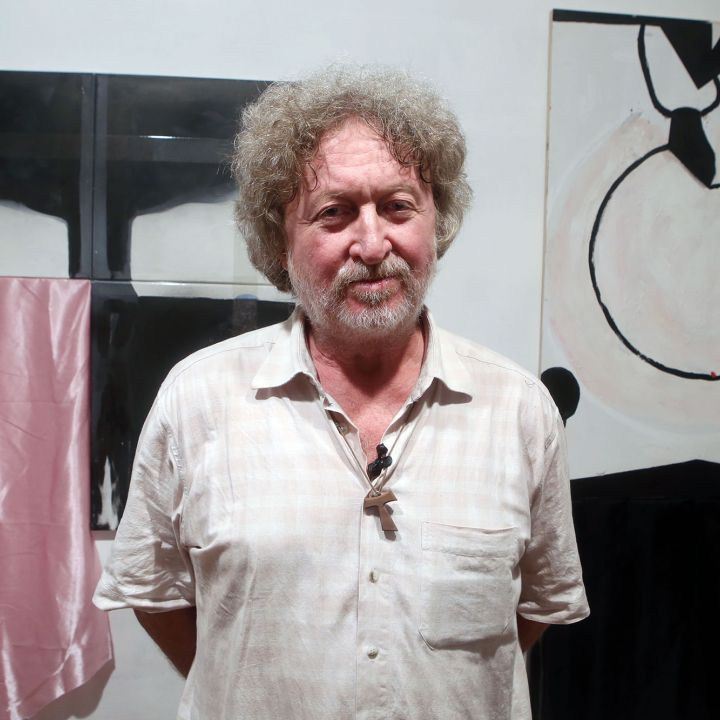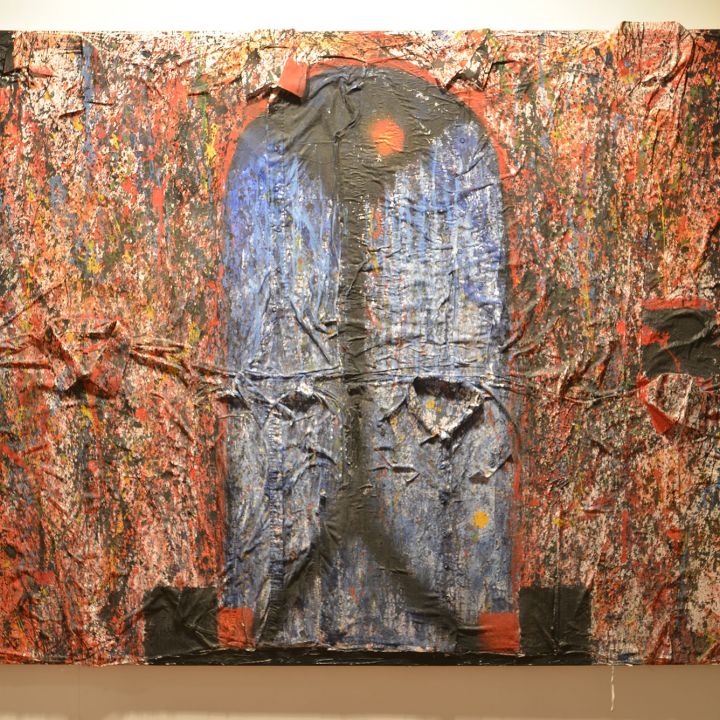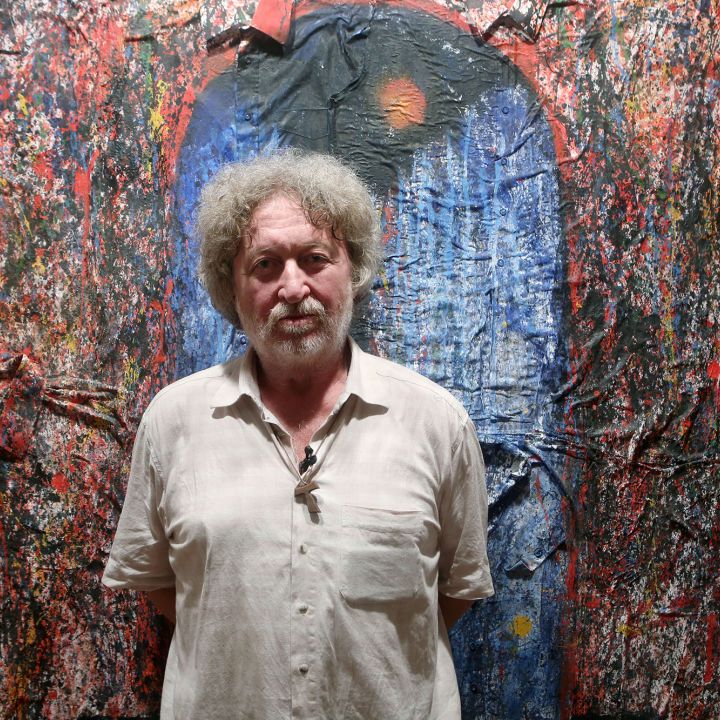Exhibitors: ef.Isván Zámbó painter, graphic artist, sculptor, musician, Munkácsy Prize winner; László feLugossy visual artist, performer, Munkácsy Prize winner and András Wahorn artist, visual artist, musician, film director, philosopher, Munkácsy Prize winner
"It must have been my serially bad reflexes - and this is a useful euphemism to cover up my delusions - but whenever people asked me what I was doing in Veszprém today, I always replied that I was opening the Commission's/ Bizottság's exhibition. What kind of exhibition about the Commission/ Bizottság again, they asked with some impatience, since the Commission's/ Bizottság's awakening in the Kunsthalle Budapest, which lasted for almost a year is still vivid in people's memories. To which I self-consciously replied that it was not an exhibition about them, but that they were exhibiting. Each time I was charitably corrected that it must not be the Commission's/ Bizottság's exhibition, but that of ef Zámbó, fe Lugossy and Wahorn, Vajda Studio. Which is true and yet I was not ashamed of my apparent ignorance. Because the names and work of the artists exhibiting here are inseparable from a myth called the A.E. Committee/ A.E. Bizottság.
The fate of the orchestras is that they will disappear. Myths are destined to grow stronger after their subject has disappeared. And although the Commission/ Bizottság disbanded itself in 1985, the myth of the orchestra cannot be disbanded. It lives on and engages, attracts or repels generations. However it is, it exists and it is inescapable. Why am I mentioning this now? Because the joint activity of the Commission/ Bizottság and the painting of the exhibiting artists show and should show many similarities, since both are a not insignificant part of their art. It does, because both were partly developed and completed in the avant-garde and partly because the same question mark was raised in both music and painting - and later in other related artistic disciplines in which they dabbled and meddled. What is this question mark? It is the self-examination and in practice the imposition of responsibility on music and the visual arts, both then and now, out of honesty, freedom, courage and originality. The question mark is a sign of non-compliance, of not wanting to comply, a symbol of the difficulty of defining a place in our case.
One of them gave this definition of their own activity: "I use the word important, not good." Of course, what is good is good, even if the adjective 'important' is used, which is obviously a social approach. And here music and painting are divided. Whereas music was important from a socio-political point of view, the artists' work in the visual arts and in particular painting was interesting and important from an aesthetic point of view, but also good. The main value of exhibitions such as this one beyond the intrinsic value of the images hung on the wall and the results of the artists' intentions is necessarily to separate the social phenomenon from the aesthetic product. Although the question mark has the same intention and effect in both cases and cannot be sharply separated from each other, it has a very different content on the two artistic fronts. While music attempted to draw out this subjugated social stratum that was not necessarily occupied by a progressive dictatorship of taste out of saliva and powdered sugar, paintings by ridiculing and bracketing conventional messages and solutions attempted nothing less than to shake the well-established and secure sense of tranquillity of an audience accustomed to works without stakes. Either the canonised artists themselves, or the art world itself, which is canonising itself. From the latter point of view both phenomena, music and painting, are dangerous and annoying. Because neither of them can be classified, because neither of them can be labelled, neither of them can be put into a safe box.
The avant-garde is never a scatula, not even a precise umbrella term for all those artistic endeavours that cannot be squeezed into established art historical or art theoretical categories. The avant-garde is associated with a strong individuality, individual courage, a bold desire to break with convention, impassioned honesty, honest expression and display and a daily changing practice of incorporating unused and unused elements and combinations (often thought and considered to be unartistic) into art. The avant-garde is not a final state, but a continuous attempt to approach the final state of proximity, but never to reach it. The avant-garde is therefore a constant movement, but also a constancy, a constancy of movement and change. Thus, the orchestra may have had to cease to exist because it could only sustain productive change in its operation for a certain period of time, whereas painting - and, I must stress, its related artistic manifestations - is a creative activity capable of constant renewal and, while retaining its individual characteristics, of constant change. Again, a quote from an interview with an artist. "Back then in the 20th century the artist's task was to create something that no one had ever thought of, that is, that no one needed, without listening to anyone or anything, relying only on his inner voice." This is a tellingly precise sentence and two points are worth highlighting. The first is that of art driven by inner voices, which presupposes a sharp contrast between art that seeks to represent reality and art that is laden with social messages. The other is the gesture of not having to offend anyone, on the contrary, a self-respecting and thoughtful gesture that practically rejects the commodity of artworks, rejecting the compulsory conformity imposed on their recipients.
I'm confused for a minute here. An avant-garde exhibition should obviously be opened with avant-garde gestures. Sitting in a tub of water, with a blinding magnesium flame in my palm, swaying up and down in front of the paintings in a loincloth, tying myself or the artists, or even the audience with angel wings on my back, I could vacuum clean while I do it, or hanging upside down from the ceiling, reading this introductory text from back. I could, if I could - and that sort of thing - and if these images belonged to the avant-garde's bourgeoisie-pushing lineage. But presumably they don't. All of the images are saturated with emotion, with refractions of the inner world, with strange shapes and forms of movement, angularities and roundedness. It is a long-standing obsession of mine - and I can only hope that the exhibiting artists are not offended by this - that underneath every avant-garde gesture there is a subtle, very sensitive, romantic streak at work. This romantic streak is, of course, rarely discernible and that is what the means of alienation and alienation used in the work are for. Even if we stand in front of these pictures long enough, something of the covered emotionality, of the passion for life, which must be there, comes through to us from behind the not a few grimaces that dominate the pictures, for why should these three men have been spared if others are constantly tormented by the human essence: suffering and passion, and the rising from them. So I don't regret the bathtub, the dazzling flame of the magnesium, the erotic undulation of the loincloth, that I don't tie up the artists and the audience under the pretext of an introduction, that I don't have a vacuum cleaner with me, that I don't have angel wings attached to my back, that I don't hang upside down from the ceiling like a bat, and that I don't read the text of this introduction from the back. I am trying to appear to be a normal person. I do no differently than the exhibiting artists do: they take their inner voices seriously and if no one wants them, they are bought by one of the four devils playing with a ball in one of the paintings. Or maybe - all of them.
Nor would I think that the task of an introduction would be to analyse the works on the walls. I can, of course, make some comments. The three artists have created very different worlds for themselves with a sharp, characteristic distinction both from each other and from the pictorialism familiar to the general public. Therte are those who transpose the idea of childhood into the paintings, while at the same time the tremors of adulthood wash over the viewer in front of the images with a penchant for collage techniques, green forks blooming among red pots, against a backdrop of masks, the linear Rembrandt comes to life, the king's keyboard arm is being lifted by a contraption resembling a toy tank, under his chair is a red polka-dotted ball, and what appear to be breasts and female buttocks, and perhaps not only appear to be idols, are exalted in geometric shapes, spooning balls from plates, tossing one another with dazed, puppet-like bodies, green fingers holding and stretching green dead bodies wrapped in mummy wrap, while the red heart sinks into the funnel at the base of the pyramid enthroned before volcanoes, in the vicinity of a heron fountain, a John the Bard/János Háry motif comes to life orchestrated to a Miska jug and Superman, amidst a ruined toy installation of dwarfs, fish, a walking red heart, faceless people with split and stitched faces... Who acts out gravity, floats chairs in space, hangs blue-headed man upside down, coils spitting snake towards the sky, two-headed UFO creature stands along a scrawl evoking stable mother, set in a wild yellow world, moves embryonic creatures in black space, imitates a bunny king with torn head and hanging tongue dog, with raised shaman fingers, puts a man in a red space with a three-fingered yellow hand reaching for a yellow cloud, gives two green palms with the exposed genitals of Emőke and Esther and a green Géza, or a woman licking herself in a performance that puts circus performers to shame and in addition suspends the picture to a frivolous height... Who creates a breeding ground of forms, yellow and black idols in a sea of black lines, a network of creatures of lines in a shower of tiny fragments of colour, a black line in a blue gate, pasted around with a thickly applied colour orgy, ironically wise and cheeky and provocative sentences in black circles in white letters, which a swallow lifts up into the consciousness of the recipient, dropping soft mauve silk underneath a black and white cross composition, dropping soft black silk underneath line applications, and in a mysterious black altar composition, pondering the space-absorbing extraordinariness of black composition... Material, form, a set of frivolous ideas, material and again form, and again a set of ideas that are strikingly frivolous, but all the more thought-provoking.
Another quote from an interview, "I couldn't really be an avant-garde artist because I was always interested in physical contact with the material." I think all three can say that about themselves. The three of them are not real, the three of them are real avant-garde artists who are in a constant struggle to associate matter and spirit, matter and spirit.
If you have been paying attention, and I hope and assume you have, it may have become clear to you that my intention in these descriptions was far from being to analyse, least of all to explain the images on the wall. In Greek philosophy, there is a theorem that contemplation alone can grasp the essence of what exists and that judgement or inference already takes one into false, false realms. So I was just contemplating, mostly out of a guided self-absorption to show that these avant-garde works - with their deliberately prosaic titles, their incessantly chunky irony, in some way in contrast to or even because of it - are full of poetry, I would even venture to say that poetry is what makes them avant-garde. But I would venture no further. I will close with a final quote from an interview: "art is where there is something absurd. Where there is a collision." Let this be our guide when we look at these pictures: let us find the collisions between the absurdities behind, above and below."
Tibor Zalán writer (spoken at the opening ceremony of the exhibition on 18 July 2015)
The exhibition was realized in cooperation with VeszprémFest.

